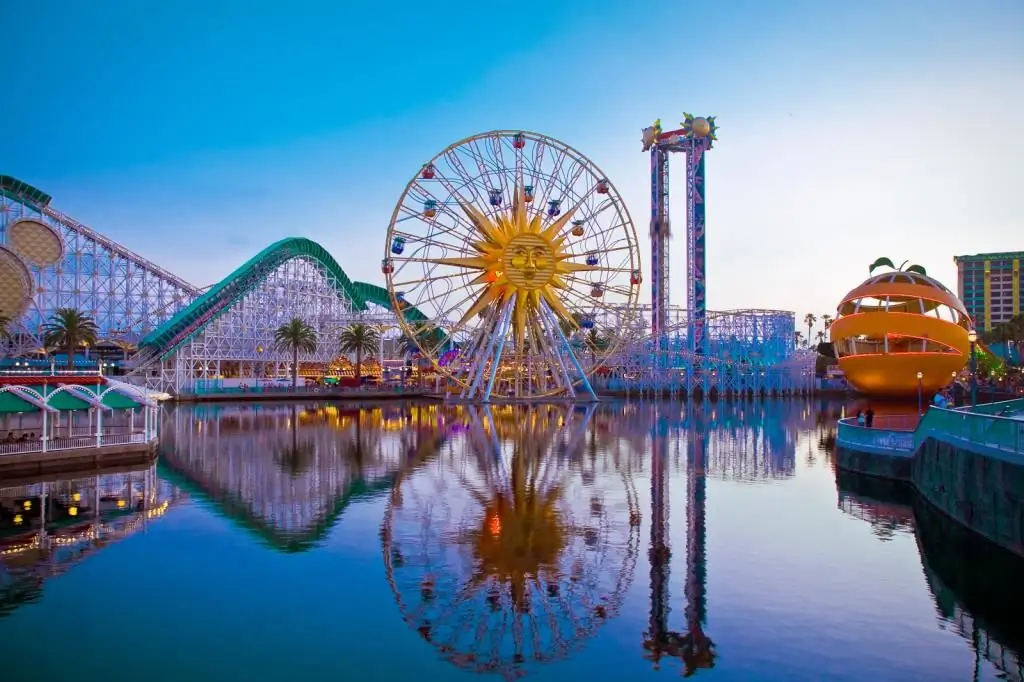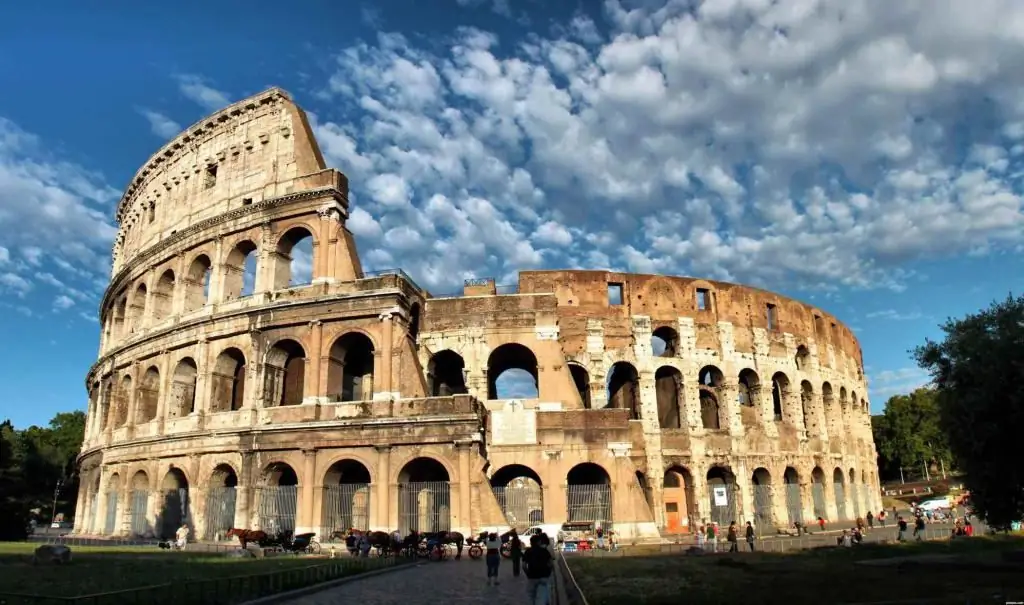- Author Harold Hamphrey [email protected].
- Public 2023-12-17 10:06.
- Last modified 2025-01-24 11:10.
Oceanário de Lisboa is a Portuguese aquarium in Lisbon, the second largest in the Iberian Peninsula after the Spanish one in Valencia, and a research institute for marine biology and oceanography. It contains an extensive collection of many species of fish, birds, mammals and other marine life. This fascinating place was voted the best aquarium in the world by US travel site TripAdvisor in 2017.

History
The complex was built and opened as part of the exposition of the last world exhibition of the XX century "Expo-98", with the theme "Oceans - the legacy of the future". Since then, the colossal underwater world at the Lisbon Aquarium has attracted almost a million visitors every year from all over the world. Until December 8, 2009, 14 million people visited the exhibition. In 2012, that number reached 16 million. During the same period, it was noted that out of approximately 900,000 visitors, about 320,000 were Portuguese and 600,000 were tourists from other countries.
27 February 2016Oceanário de Lisboa celebrated its 20 millionth visitor. The Vasco doll with the motto "Vasco is a good wave!" was chosen as the organization's mascot, which reminds of the Portuguese navigator Vasco da Gama. This huge talisman, to welcome visitors, is located in two places: in front of the main entrance and in the bay where the territory of the aquarium begins (the port of the Tagus river).

Architecture
The main exhibition pavilion, reminiscent of a moored aircraft carrier. The general style direction of the entire complex was developed by a North American architect named Peter Chermaeff. The Aquarium building in Lisbon received the Valmor Prize for Architecture in 1998. This was not the first work of a famous builder, similar projects of Chermaeff are known all over the planet, and among them the world's largest Japanese aquarium on the island of Okinawa.

In April 2011, the new Edifício do Mar building, designed by architect Pedro Campos Costa, was inaugurated, completing the Oceanario expansion project. The new building combined a space reserved for temporary exhibitions, a new reception area, ticket offices, an auditorium and the Tahoe restaurant.
Permanent exhibition
The total area of the aquarium in Lisbon reaches 20,000 m². Its tanks collectively contain about 7,500,000 liters of water, divided into more than 30 aquariums. Approximately eight thousand animals and plant organisms, represented by 500different kinds.

The main attraction in the interior of the Oceanário de Lisboa is the 5,000,000 liter central aquarium. It displays the World Ocean, and several species of fish coexist organically in it, among which there are sharks, barracudas, tuna, small tropical fish, giant manta rays and many other individuals. Four more aquariums around the main one showcase the diversity of marine life from the North Atlantic (Azores coast), the Antarctic Ocean, the temperate Pacific Ocean (Rocky Shores) and the tropical Indian Ocean (coral reefs).

Some animal and plant representatives
The Lisbon Oceanarium provides a collection of seabirds, but the penguin display is especially attractive to visitors. Mammals are represented by two sea otters, adorable animals of the sea otter family. Of the mass of crustaceans, two large specimens of spider crabs with incredibly long limbs are most impressive.

The aquarium houses a stunningly diverse collection of bony and ray-finned fish such as sharks, chimeras, rays, seahorses and more. Starfish and urchins, corals and anemones, jellyfish and turtles are full of bright patches. Shellfish surprise with incredible shapes: snails, octopuses, cuttlefish and others. There is a huge collection of underwater and coastal plants. The unique conditions of the oceanarium make it possible to keep especially capricious representatives,which can only be seen in the natural environment. A large, almost three-meter specimen of the moonfish is one of those specimens that only this institution can boast of.

Service and limitations
As one of the world's foremost public aquariums, it was the first on the continent to receive international quality certifications, including the Eco-Management and Audit Scheme. Seven prestigious awards have been won throughout the life of the Lisbon Aquarium. Among them is the silver medal of 2006 "For Merit in Tourism". This reflects the high level of work of the Oceanário de Lisboa complex. Cells, the so-called "sea buildings", are arranged at the zero level, so that visitors can safely leave their things in them for storage. If necessary, a wheelchair can be requested.

The aquarium has two comfortable areas where you can have a hearty lunch or just a snack. The Tejo Restaurant offers a wide variety of quality Mediterranean cuisine with a comfortable, contemporary design. Opening hours at the Lisbon Aquarium: in summer from 10:00 to 19:00, in winter from 10:00 to 18:00. The Coffee & Tea cafeteria is a space on the terrace where you can enjoy your rest with a cup of drink and a light snack. In summer, the cafe is open from 9:00 to 20:00, and in winter from 9:00 to 19:00.
However, there are some prohibitions and restrictions for visitors to follow:
- don't take pictures with flash or any other backlight;
- strictly no smoking;
- you may not eat or carry any food on the territory of the complex, except for the restaurant and cafeteria;
- animals and plants must not be touched or moved.
Working schedule and cost of viewing
The complex can be visited daily from 10:00, except Monday. The exposition is open until 19:00, but the last entry is allowed until 18:00. The price for the Lisbon Aquarium for the permanent exhibition will be:
- visitors aged 13 to 64 - 15 euros (1123 rubles);
- children from 4 to 12 years old and people over 65 years old - 10 euros (748 rubles);
- Children under the age of three go free.
Price for viewing the permanent and temporary exhibition:
- for visitors from 13 to 64 years old - 18 euros (1347 rubles);
- for children from 4 to 12 years old and people over 65 years old - 12 euros (898 rubles);
- Children under 3 also get in for free.

How to get to Lisbon Aquarium?
Oceanário de Lisboa is located in the Oliveis Valley, in the Parque das Nasua. Oriente station is the nearest point of arrival of all public transport to the aquarium, including metro trains (red line). Numbers of buses going to the station "Oriente": 5; 25; 28; 44; 708; 750; 759; 782; 794.

According to visitors, the aquariums are well lit. Despite the fact that you have to take pictures without a flash, the images are quite high quality even at low shutter speeds. At the localsit has become customary to come here to have a wedding photo shoot.






